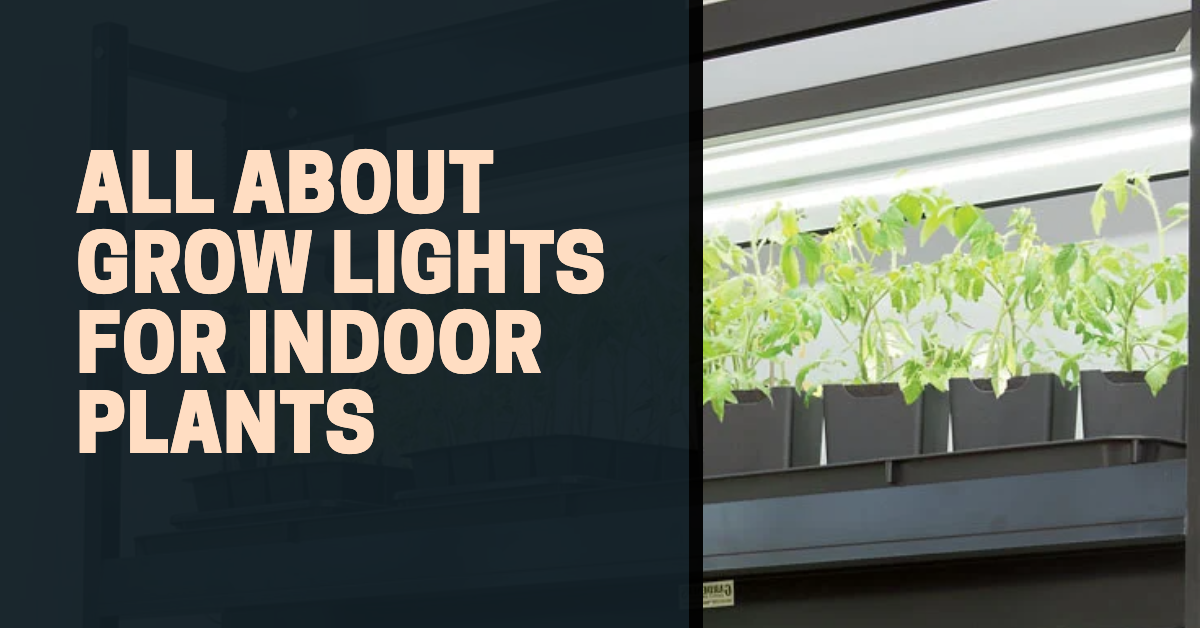
So you decided to start growing plants indoors. It keeps away pests and shields your plants from other harmful elements. Now, one of the key elements to successfully grow plants indoors is to have a sufficient lighting system that can provide for the needs of your plants. It’s a non-negotiable as it allows your plants to absorb it and convert minerals into energy for growth.
Sounds simple? Not really, but it’s not as complicated as you think.
Indoor Grow Lights 101
Color Temperature
Now, can you pick any light for your plants? The short answer is yes. But, it must have the right color temperature for it to work. If you’re looking at house plants, ordinary lights should be fine. But for those bearing fruits, you’re going to need something more specific.

To give you an idea of what color temperatures work, plants that only vegetate, or don’t grow flowers or fruits, your light needs to have a color temperature between 6,000 and 7,000 K. These lights are often called daylight or cool white. Plants that flower, meanwhile, need a light with a color temperature between 2,000 and 3,500 K. These lights would be labeled as warm or soft white.
Ideally, you ought to be using LED bulbs, since they have the lowest heat signature, use less power and last the longest. But if LEDs are not available, the best alternative you can use are compact fluorescent lamps, more popularly known as CFL bulbs.
Know Thy Wattage
It also pays to know how much wattage your light uses, especially if you’re not using LEDs. Knowing the wattage of your lights can help you see how much space they can illuminate without sacrificing quality. Knowing the wattage of your lights can help you see how much space they can illuminate without sacrificing quality. As a rule of thumb, you can start with
32 watts per square foot of growing space for LED bulbs. That means a 2 x 2 feet footprint would need a 64 watt LED to illuminate effectively.
CFL bulbs can be tricky, though. Many start with 100 watts and increase or decrease accordingly. For vegetating-only plants, such as lettuce or basil, you can get away with a lower wattage. But you may need more for those cherry tomatoes.
How Far Should You Hang Your Lights?

You also need to know how high to hang your lights, especially for those using non-LED bulbs that have higher heat signatures.
As a rule of thumb, if it’s too hot for the back of your hand, then it won’t be good for your plants. The higher the brightness is, the more you need to pull it away to avoid burning the leaves of your plants. That’s why incandescent bulbs are placed around 24 inches away due to their heat signatures. LED bulbs have that advantage and may be hanging as low as 6 inches.
Moving Up To Professional-Grade Lights
Are you enjoying growing indoors? Do you want to get more out of your plants? If you want to get the most mileage out of your fruit-bearing plants or want to scale up your leafy vegetable production, then you ought to consider getting professional-grade to grow lamps.
Compared to ordinary lights,
grow lights are designed for plants and have features that will help you enhance the experience. These features include dimmers and even cooling systems, both active and passive. These grow lights are also compatible with switching/control systems that let you program your lights based on the needs of your plants.
Now, if you plan to shop for grow lights, you’re likely to encounter more terms here, but the most common you’ll hear would be
full spectrum. Full-spectrum refers to the lighting spectrum that light can cover. It means it is capable of covering the vegetation and flowering stages of plant growth. These are ideal for those who are growing fruit-bearing plants, such as tomatoes and peppers. What makes full-spectrum lights special is that you don’t need to swap out lights between phases, so you can continue to focus on other aspects of caring for your plants.
Parting Thoughts
Establishing your own grow light system doesn’t have a learning curve, but you only need to be familiar with the specifications of the lights you have available, as these will help you identify what limitations you have and how they can affect the development of your plants.
As not all lights are made equal, your main considerations will always be the color spectrum and the plant you’re growing. That said, once you understand these needs and you’ll be growing indoors in no time.




